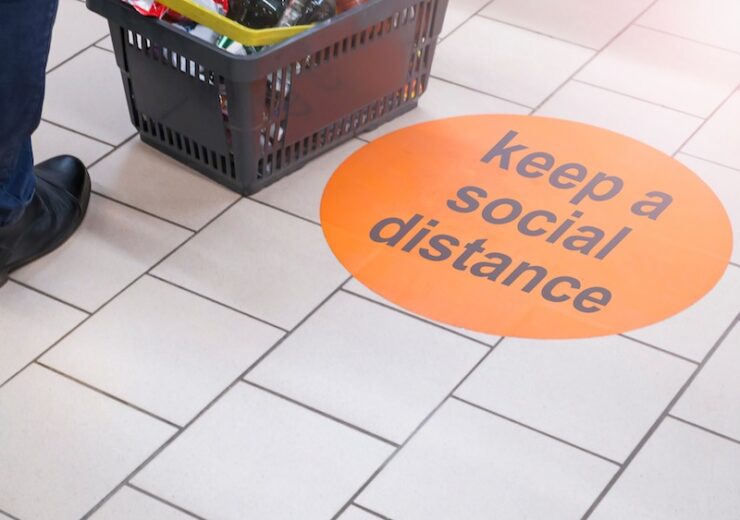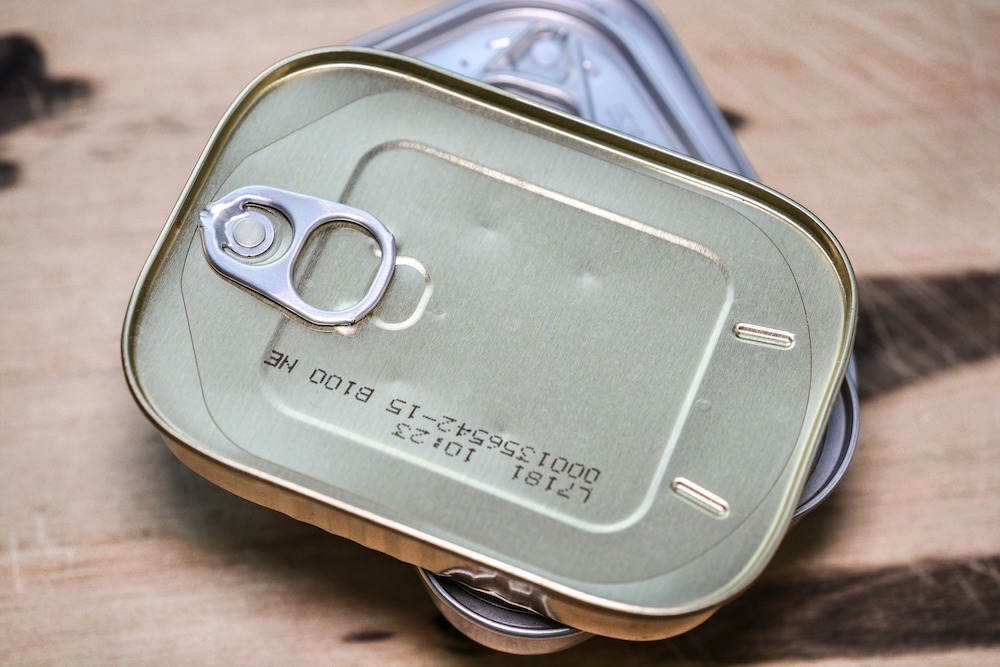The Covid-19 pandemic has seen consumers become more concerned about how hygienic packaging is, and has caused an increase in online grocery shopping

Due to social distancing restrictions, Covid-19 has at least temporarily changed the way consumers shop (Credit: Shutterstock/V.Lawerence)
Covid-19 has had a significant impact on many areas of business – not least of which being the way consumers interact with packaging and products.
In July, management consulting firm McKinsey and Company published research looking at behaviours during the pandemic.
It found five themes had become evident in the way people interacted with businesses across the globe.
This included a shift to valuable and essential products, digital purchasing, and a move towards a more healthy and caring economy.
Some of these consumer trends have changed the way people interact with packaging, we investigate three of these areas.
1. Consumers focused on hygienic packaging during Covid-19
In March, a study co-authored by scientists from the Centers for Disease Control and Prevention, UCLA and Princeton University found Covid-19 could last for two or three days on plastic and stainless steel materials.
It also discovered it was detectable for up to four hours on copper, and 24 hours on cardboard.
Guidance by the World Health Organisation published in April found that, although this was the case, it’s “highly unlikely” that consumers can contract Covid-19 from food or food packaging.
The advice went on to add that it was “imperative that the food industry reinforce personal hygiene measures”.
Despite the fact people are highly unlikely to contract Covid-19 from food packaging, consumers are still concerned about the safety of the food they purchase.
As part of this, there have been some reports of people wiping down food packaging with disinfectant after bringing shopping into their home.

Speaking at Packaging Innovations’ 2020 Discovery Day, market research company Mintel’s global packaging insights director Ben Punchard says this has opened up a discussion about whether manufacturers create “structural cues” that enable consumers to wipe packaging down.
He added: “Do we have for example textures and surfaces that might have been great last year at communicating that a product is natural and organic, but right now may not be so great because consumers want something that they can disinfect.
“Another structural cue worth addressing is that there are elements of packaging that consumers are hyper concerned about when it comes to hygiene.
“A really good example of a simple packaging format that addresses this is the peel-off foil on the top of the cap developed by San Pellegrino.
“What this does is it adds a level of convenience for the consumer because it tells them the area they’re concerned about is protected and maintained in a hygienic way.”
2. Consumers changing the way they shop
When nationwide lockdowns began to come into force at the outset of the Covid-19 pandemic, consumers were concerned about both the limited amount of products on supermarket shelves and shopping in stores more generally.
As such, a lot of people turned to online grocery shopping services provided by retailers such as Tesco and Sainsbury’s, or specialist online supermarkets like Ocado.
In August, a study conducted by supermarket chain Waitrose found that one in four people in the UK now buy food and essentials at least once a week online.
Alongside this, it discovered that more than three-quarters of people regularly purchase household goods from supermarket websites – up from 61% from 2019.
Speaking at the time, Waitrose’s executive director James Bailey said: “Even before the Covid-19 pandemic there were few retailers that wouldn’t have predicted the continued growth of e-commerce relative to physical shops.
“But what would have previously been a gradual upward climb in demand has, with the outbreak of Covid-19, turned into a trajectory more reminiscent of scaling Everest.”

Punchard says that, in addition to this, there’s an “even stronger reticence to spending time in-store”.
He said: “This may be because we don’t want to be hanging around other consumers who may be a source of infection.
“We know that sometimes there are queues forming outside of stores, so we don’t want to squander the valuable time and we don’t want to force others to wait longer, so there’s social pressure there as well.
“But whatever it is, it means that at the moment packaging businesses have even less time to communicate with the consumer than they have done previously.
“And up to the beginning of Covid, we’ve seen a proliferation and explosion of product claims around ethics and quality, which made packaging quite shouty and noisy.
“That’s really not going to work in an environment where either a consumer is shopping online, so they only see a thumbnail, or they’re rushing through the shop trying to get things done as quickly as possible.
“We need to consider packaging design and how relevant it is for this kind of shopper environment.”
3. Consumer concern over food shortages and food waste
In the early part of the pandemic, shelf shortages were seen as a concern to consumers – with major UK supermarkets even signing up to a letter in March urging customers to shop responsibly to ensure supplies are shared out fairly.
During the early part of the lockdown in the country, products including canned meat, pasta and soup, as well as children’s medicine and toilet roll were among those being most widely purchased.
Off the back of this, according to Punchard, has been an increase in concern about food waste amongst consumers.

He explained: “I think this is because if someone is concerned about getting hold of food, then they see much more value in the food that they have in their cupboard.
“So we’re seeing a really big rise in food waste concerns, and therefore packaging that can provide things like portion packs, which preserve the rest of the pack until someone is ready to consume it, is going to resonate quite well at the moment.”
